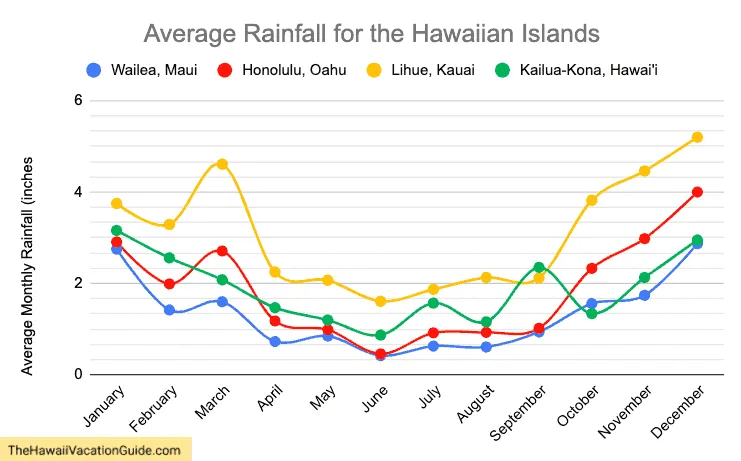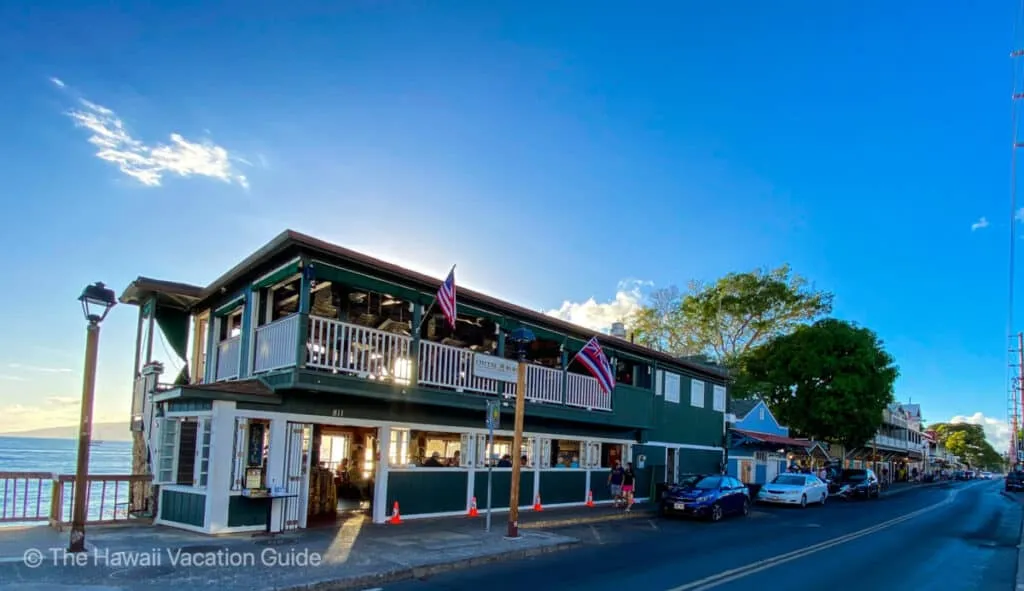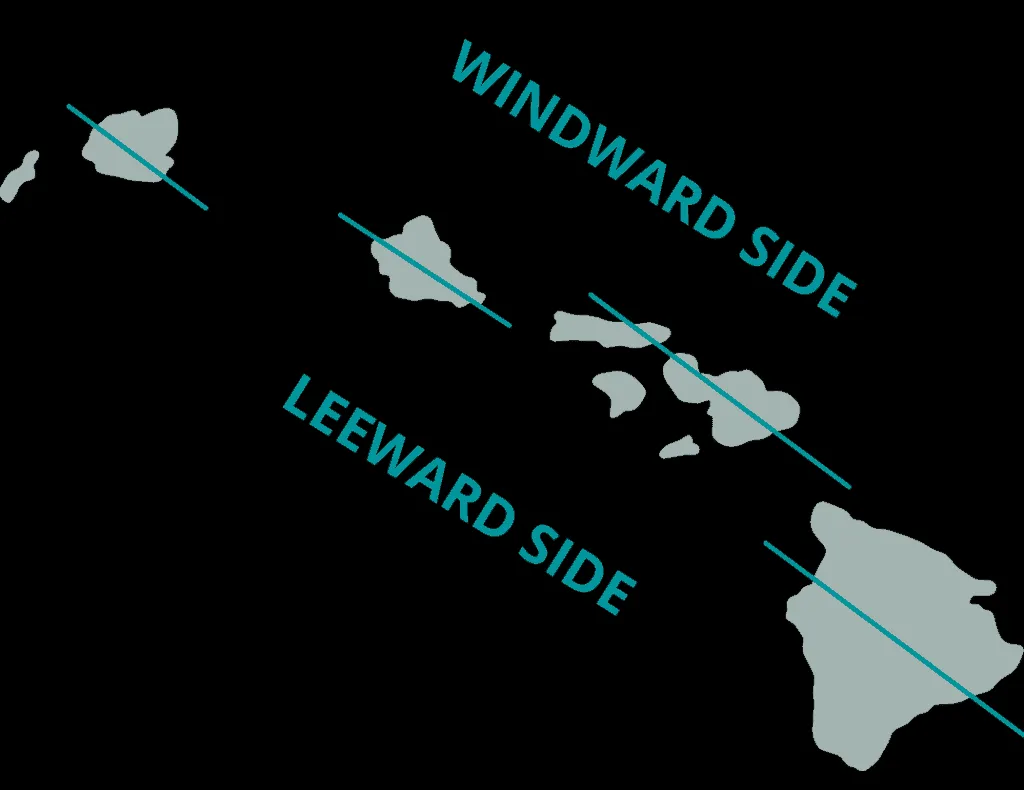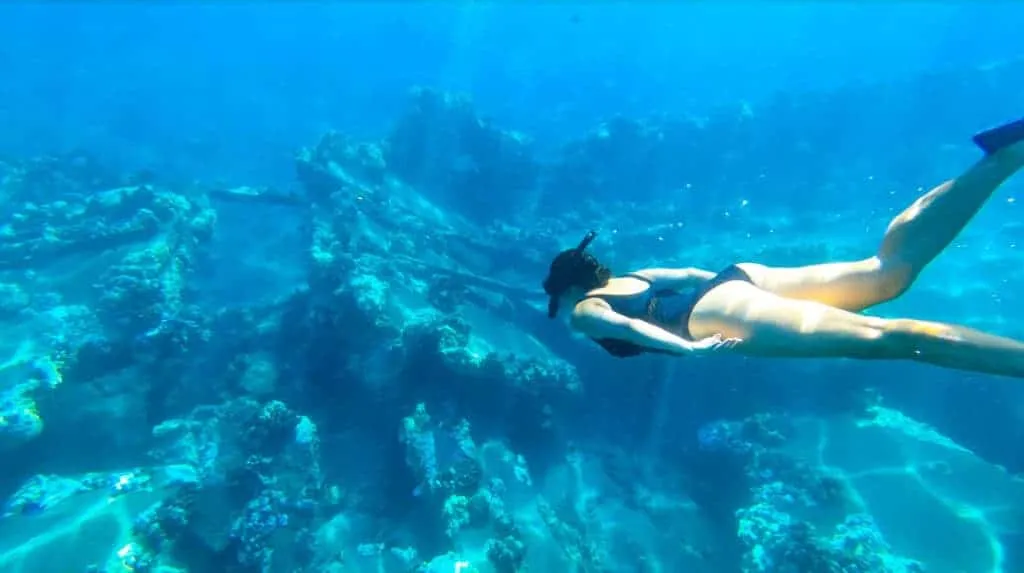Planning a trip to Hawaii in 2025? You’re dreaming of paradise! With sparkling waters, stunning sand beaches, waterfalls, volcanoes, and vibrant culture, Hawaii offers an unforgettable experience. But planning can feel overwhelming. This Hawaii Trip Planner guide, created by experts who lived here, provides essential tips to make your vacation seamless and spectacular. We’ll help you navigate choices, save time, and maximize your adventure in this incredible destination.
Is Maui Open for Your Hawaii Trip?
Many travelers wonder about visiting Maui after the devastating Lahaina fire in August 2023. The short answer is yes, you can visit Maui in 2025, and the island is welcoming visitors. While the historic town of Lahaina remains closed for rebuilding due to its cultural significance and the extensive damage sustained, the vast majority of Maui was unaffected by the fire.
Other areas of the island, including popular tourist destinations and resorts, are open and ready to host you. Visiting Maui now supports the island’s recovery and local economy. You can enjoy beaches, activities, and the natural beauty of Maui outside of the impacted area.
Picking the Perfect Island for Your Hawaii Trip
The first crucial step in using any Hawaii Trip Planner is selecting which island or islands you want to explore. Though they share similarities, each Hawaiian island boasts a distinct personality and offers unique experiences. Taking the time to decide which one aligns best with your interests is vital for a fulfilling trip.
- Oahu: Perfect if you seek a mix of cosmopolitan city life, world-class dining, nightlife, and easy access to historical sites. It’s also renowned for its incredible hiking trails.
- Maui: Ideal for beach lovers, snorkelers, and those who enjoy beautiful resorts. Maui offers stunning coastlines and opportunities for ocean adventures.
- Big Island (Hawaii Island): Choose this island for volcanic landscapes, adventurous exploration, and unique experiences like swimming with manta rays. It offers dramatic geological diversity.
- Kauai: Known as the “Garden Isle,” Kauai is suited for travelers who appreciate rugged cliffs, lush valleys, a slower pace, and incredible natural scenery like the Na Pali Coast.
If you’re drawn to multiple islands, planning an island-hopping itinerary is possible, but requires careful consideration of time and logistics. Your Hawaii Trip Planner should account for travel time between islands.
Best Time to Plan Your Hawaii Trip: Weather, Cost & Crowds
There’s no truly bad time to visit Hawaii, as the weather is generally pleasant year-round. However, certain periods offer distinct advantages depending on your priorities. The best time to plan your Hawaii Trip often balances weather, cost, and crowd levels.
Consider the shoulder seasons: September/October and April/May. These months often provide a sweet spot with good weather, fewer crowds compared to peak holidays, and potentially better prices on flights and accommodations.
Weather Considerations
Hawaii is tropical, meaning warm temperatures prevail. However, rainfall varies throughout the year and by island side (windward vs. leeward). The wetter season generally runs from November to March. If avoiding rain is a top priority for your Hawaii Trip, aim for the drier months, typically April to October. Remember that even during the wetter season, rain often comes in short showers, and sunny periods are frequent.
 Hawaii Trip Planner – Average Rainfall by Island and Month
Hawaii Trip Planner – Average Rainfall by Island and Month
Price Factors
Hawaii is an expensive destination, and prices fluctuate significantly based on demand. Peak times, like Christmas/New Year’s, summer vacation, and school breaks, see the highest costs for flights, hotels, and rentals. For a more budget-friendly Hawaii Trip, target the off-peak periods like May, September, October, and early November. Flexibility with your travel dates can lead to substantial savings. Understanding typical costs helps in budgeting.
Avoiding Crowds
Crowd levels impact everything from beach access and parking availability to tour capacity and restaurant reservations. Like pricing, crowds peak during major holidays and school breaks. Visiting during February, April, May, September, and October generally means encountering fewer tourists. However, if your Hawaii Trip goal is specific, like whale watching (mid-December to mid-April), you’ll need to visit during that particular timeframe, which coincides with busier periods.
How Long Should Your Hawaii Trip Be?
Given the travel time to reach Hawaii, especially from the mainland United States, planning a sufficiently long trip is crucial to avoid feeling rushed and exhausted. Your Hawaii Trip Planner should allocate enough days to relax and explore.
We recommend a minimum trip length of one week (7 days) for a Hawaii vacation. This allows enough time to settle in on one island, adjust to the time difference, and explore a few different areas without feeling like you’re constantly on the go.
If you have more time, extending your stay is highly recommended. A 10-day or two-week trip provides a much more leisurely pace and allows for deeper exploration of a single island or the possibility of visiting a second island. Anything less than a week will likely feel like a fleeting visit.
Where to Stay: Hotels or Vacation Rentals for Your Hawaii Trip?
Choosing the right accommodation is a key part of any Hawaii Trip Planner. Your decision between a hotel and a vacation rental (like Airbnb or VRBO) depends on your travel style, group size, and priorities. Both options offer distinct advantages.
Hotels are ideal if you’re looking for a resort experience with amenities like large pools, on-site restaurants, daily housekeeping, and concierge services. They offer convenience and a traditional vacation feel.
Vacation rentals are often better suited for families or groups, offering more space, separate bedrooms, living areas, and crucially, a kitchen. A kitchen can save money on dining out by allowing you to prepare some of your own meals. Rentals provide a more local feel and can be a good value for longer stays or larger parties. Your Hawaii Trip Planner should factor in whether you prioritize service and amenities or space and home comforts.
Getting Around: Do You Need a Rental Car for Your Hawaii Trip?
For most visitors, having a rental car is highly recommended to fully explore the island(s) during your Hawaii Trip. While public transportation options exist, they don’t reach many of the beautiful, secluded beaches, trailheads, or scenic spots you might want to visit.
The Ultimate Guide to What to Eat in Austin Texas
Your Guide to the Michigan Map with Cities – Unlocking the Great Lakes State
Ultimate Guide to Weekend Trips From Las Vegas
On Oahu, specifically if you’re staying in Waikiki, you might be able to manage without a car for part of your trip. Waikiki is very walkable, and many tours offer pickup there. You could potentially rent a car just for the days you plan to leave Waikiki and explore other parts of the island. This can save money on expensive hotel parking fees. Car-sharing services are also available in some areas like Waikiki.
On Maui, the Big Island, and Kauai, a rental car is almost essential for sightseeing and flexibility. Relying solely on ride-shares or limited public transit will severely restrict your ability to see the best parts of the island. Booking your rental car in advance is crucial.
Budgeting for Your Hawaii Trip Cost
Let’s be clear: a Hawaii Trip is generally an expensive vacation. While there are ways to save money, it’s important to set a realistic budget. Costs vary greatly depending on the length of stay, island visited, type of accommodation, activities, and dining choices.
For a rough estimate, a 10-day Hawaii Trip for a family of four could cost approximately $13,000 or more, including flights, lodging, activities, food, and transportation. This is just an average; costs can be lower or significantly higher based on luxury levels and travel dates.
Factors that most impact cost include airfare, accommodation (hotel vs. rental, location, luxury level), food (eating out vs. cooking), activities, and car rental. Planning during off-peak times and making smart choices about accommodation and dining can help reduce the overall expense of your Hawaii Trip.
Booking Your Hawaii Trip: When to Reserve What
To avoid disappointment and secure preferred options, advanced booking is a critical component of a successful Hawaii Trip Planner. High-demand items, especially during peak season, sell out quickly.
- Rental Cars: Book your rental car as soon as you book your flight. Availability can be limited, and last-minute prices are often exorbitant. Booking early ensures you get the vehicle size you need at a better rate.
- Lodging: Like rental cars, popular hotels and vacation rentals book up well in advance, particularly for desirable locations or specific room types. Aim to book your accommodation shortly after confirming your flights.
- Tours & Activities: If there are specific tours (like a luau, boat trip, or helicopter tour) or popular activities you absolutely want to do on your Hawaii Trip, book them a few months ahead, especially if traveling during a busy period. Many popular tours have limited capacity and sell out weeks or months in advance.
- Entry Tickets: Several popular natural attractions in Hawaii, like state parks or specific trails, now require advance reservations or timed entry tickets to manage visitor flow and protect the environment. Check requirements for places like Pearl Harbor, national parks, or certain beaches. Secure these tickets online well before your visit.
- Restaurants: For highly-rated or popular restaurants, especially fine dining, make reservations as far in advance as they allow (which can range from 30 days to 6 months for top spots like Mama’s Fish House). Factor these into your Hawaii Trip dining plan.
 Hawaii Trip Planner – Food dishes on a table at a restaurant
Hawaii Trip Planner – Food dishes on a table at a restaurant
Island Hopping on Your Hawaii Trip?
Many first-time visitors are eager to see multiple islands. While island hopping is possible, especially on longer trips, it adds complexity and travel time. For a standard one-week Hawaii Trip, we strongly recommend focusing on just one island. Each island offers more than enough to see and do to fill seven days comfortably.
The process of traveling between islands – packing up, checking out, getting to the airport, flying (though short, typically 30-45 minutes), retrieving bags, getting transportation on the new island, and checking into new accommodation – easily consumes half a day or more of your precious vacation time.
If your Hawaii Trip is 10 days or longer, adding a second island becomes more feasible. However, be prepared for the travel day cutting into your exploration time on both islands. For trips of two weeks or more, visiting three or even four islands is possible but will involve a faster pace.
Understanding Hawaii’s Geography for Better Trip Planning
Understanding the basic geography of the Hawaiian Islands is surprisingly helpful when planning your daily activities and choosing where to stay. A key concept is the division into windward and leeward sides.
The windward side faces the prevailing trade winds (generally the northeast side). This side typically receives more rainfall, resulting in lush, green landscapes, waterfalls, and dense vegetation. While wetter, it’s often cooler and dramatically beautiful.
 Hawaii Trip Planner – Windward and Leeward side map diagram
Hawaii Trip Planner – Windward and Leeward side map diagram
The leeward side (the side sheltered from the wind, typically the west or south side) is much drier and sunnier. This is where you’ll find many of the famous, sunny beaches and major resort areas. When planning your Hawaii Trip activities, consider the weather patterns on each side of the island – head windward for dramatic scenery and waterfalls, and leeward for consistent beach weather and sunshine.
Culinary Delights: Eating Local on Your Hawaii Trip
Food is a huge part of the cultural experience when traveling, and your Hawaii Trip should definitely include exploring the local culinary scene. Hawaii’s cuisine is a unique blend of Polynesian traditions, Asian influences, and American styles, shaped by its history and agricultural bounty.
Make an effort to try fresh, locally caught fish like Ahi (tuna), Mahi Mahi, or Ono. Seek out farm-to-table restaurants to sample local produce like pineapple, mango, passion fruit (lilikoi), and unique varieties of taro and sweet potato. Visiting a local fish market can also be a treat.
Don’t miss traditional Hawaiian dishes, often found at local eateries or luaus. Try Kalua Pig (slow-roasted pork), Laulau (meat and fish wrapped in taro leaves), Poi (pounded taro paste), and Poke (cubed raw fish seasoned in various ways). And, of course, no Hawaii Trip is complete without trying Shave Ice – a fluffy, snow-like treat topped with flavorful syrups, often with ice cream or red bean paste inside. It’s distinctly different from a snow cone.
Can’t-Miss Sights & Activities for Your Hawaii Trip
Hawaii is more than just beautiful beaches. Each island offers a wealth of historical sites, natural wonders, and unique activities that should feature prominently in your Hawaii Trip Planner.
Consider iconic spots like:
- Pearl Harbor (Oahu): A significant historical site offering insights into World War II.
- Hawaii Volcanoes National Park (Big Island): Witness active volcanoes, lava tubes, and dramatic landscapes.
- Road to Hana (Maui): A scenic drive through lush rainforests with waterfalls and coastal views.
- Na Pali Coast (Kauai): Experience breathtaking coastal cliffs via boat tour, helicopter, or challenging hike.
- Snorkeling or Diving: Explore vibrant coral reefs and marine life in crystal-clear waters.
- Hiking: From easy coastal walks to strenuous volcanic treks, Hawaii offers trails for all levels.
- Luaus: Experience traditional Hawaiian food, music, and dance (research authentic options).
This is just a glimpse; every island has its own treasures. Your Hawaii Trip Planner should balance relaxation with exploring these unique attractions based on your interests and the island you choose.
Packing Essentials: Reef-Safe Sunscreen for Hawaii
An important and legally mandated packing item for your Hawaii Trip is reef-safe sunscreen. Hawaii has banned the sale and distribution of sunscreens containing oxybenzone and octinoxate, chemicals known to harm coral reefs.
Protecting Hawaii’s fragile marine ecosystem is vital. Ensure the sunscreen you bring or buy locally uses mineral-based ingredients like zinc oxide and titanium dioxide. Always check the active ingredients list to confirm compliance with Hawaii’s law. Using reef-safe products is a simple but impactful way to travel responsibly during your Hawaii Trip.
 Hawaii Trip Planner – Snorkeling near Lahaina, Maui seeing coral
Hawaii Trip Planner – Snorkeling near Lahaina, Maui seeing coral
Snorkeling Safely on Your Hawaii Trip
Snorkeling is a highlight for many on a Hawaii Trip, offering a window into the vibrant underwater world. While seemingly simple, it requires awareness of safety and local guidelines. Drowning is a leading cause of visitor fatality in Hawaii, emphasizing the importance of safety.
Always check ocean conditions before entering the water. Pay attention to warning signs about currents, waves, and visibility. Never snorkel alone. Understand the risks and know your physical limits.
Using quality, well-fitting gear significantly enhances your experience and safety. While tempting, cheap gear bought locally may not fit properly or perform well. Consider investing in good quality gear if you plan to snorkel frequently or rent from reputable local shops where staff can ensure a good fit and offer advice on local conditions.
 Hawaii Trip Planner – Snorkeling near Lahaina, Maui seeing coral
Hawaii Trip Planner – Snorkeling near Lahaina, Maui seeing coral
Some snorkeling spots are naturally better than others, offering clearer water, more abundant marine life, or better protection from swells. Research the best spots for the time of year you’re visiting. Taking a snorkeling tour can offer access to less-accessible sites and provide valuable guidance from local experts.
Crucially, respect marine life. Maintain a safe distance from turtles (at least 10 feet), monk seals (at least 50 feet), and spinner dolphins (at least 50 yards). Never touch or harass marine animals or stand on coral. These are protected species, and maintaining distance is for their safety and yours. Incorporate responsible marine interactions into your Hawaii Trip plan.
Connecting with Hawaiian Culture & History
A Hawaii Trip is an opportunity to experience not just natural beauty but also a deep and rich culture with a complex history. Hawaii was an independent kingdom before becoming a U.S. territory and later a state. Learning about its past and respecting its present-day culture will significantly enhance your visit.
Visit museums like the Bishop Museum or historic sites such as ‘Iolani Palace on Oahu, the only royal palace in the U.S. Explore ancient heiau (temples) or significant natural landmarks like Pu’uhonua o Honaunau National Historical Park on the Big Island.
Make an effort to learn basic Hawaiian words like “Aloha” (hello, goodbye, love) and “Mahalo” (thank you). Engage respectfully with local people and traditions. Consider supporting local artists and businesses. Understanding and appreciating the local culture adds a profound dimension to your Hawaii Trip experience.
Frequently Asked Questions (FAQ) About Planning a Hawaii Trip
- Is 2025 a good year for a Hawaii Trip? Yes, 2025 is a great year to visit Hawaii. While Maui is recovering in specific areas, the vast majority of the islands are open and welcoming visitors, offering unique experiences and natural beauty.
- How long is enough time for a Hawaii Trip? We recommend a minimum of one week (7 days) for a single island to feel relaxed and explore sufficiently. For island hopping, plan for at least 10 days or preferably two weeks.
- What’s the cheapest way to plan a Hawaii Trip? To potentially save money, travel during the shoulder seasons (May, September, October, early November), consider a vacation rental with a kitchen to cook some meals, and book flights, accommodation, and rental cars well in advance.
Plan Your Dream Hawaii Trip
Planning your Hawaii Trip involves many decisions, from choosing the right island and timing to booking accommodations, activities, and understanding local customs. By using this guide as your personal Hawaii Trip Planner, you can navigate these steps with confidence. Embrace the planning process as part of the journey to experiencing the incredible beauty, adventure, culture, and relaxation that awaits you in Hawaii.
